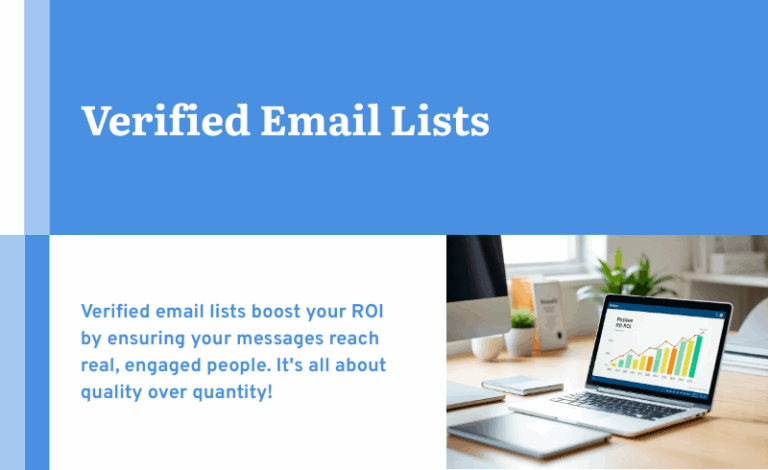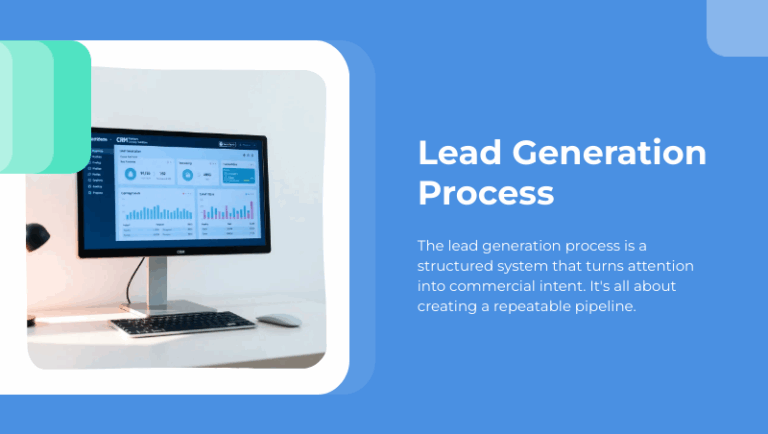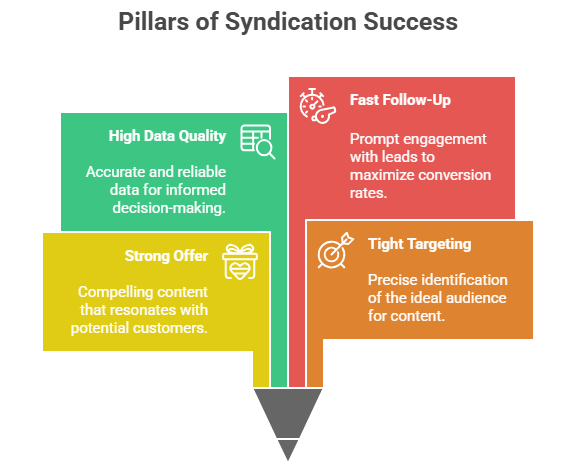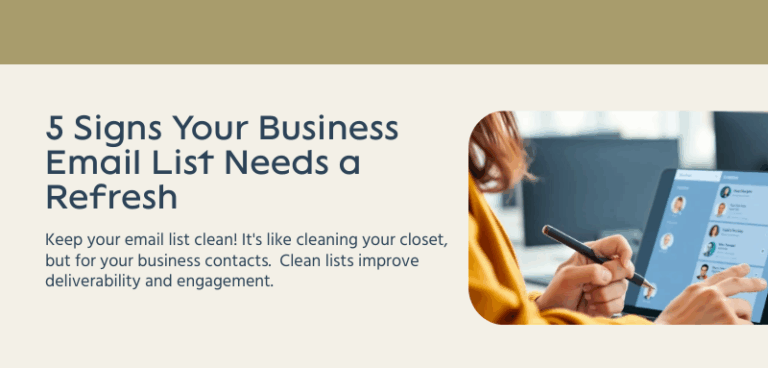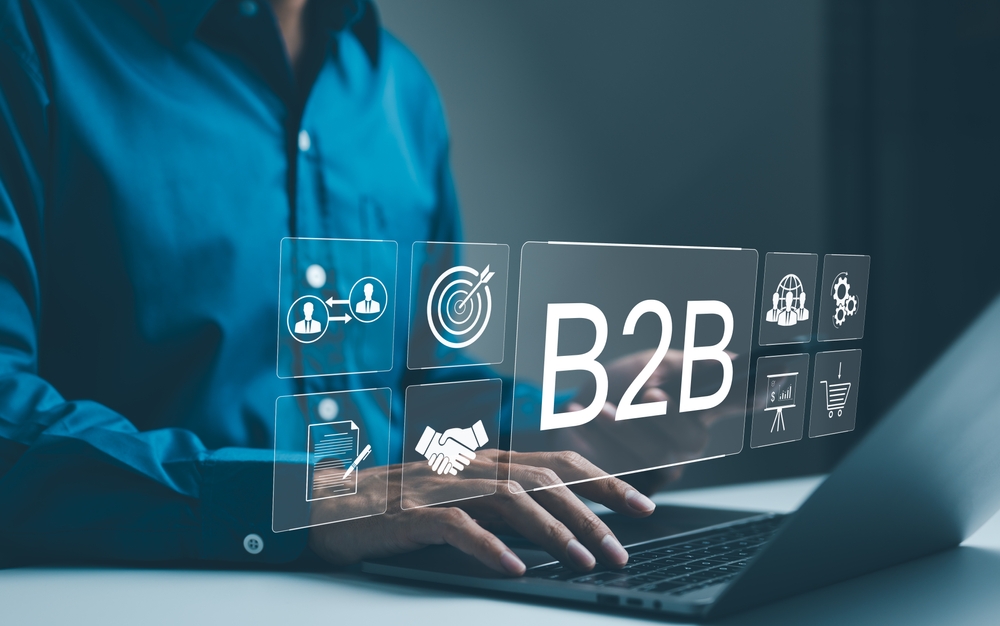

B2B SaaS lead generation has become more intricate and demanding than ever before. As competition intensifies, traditional strategies are no longer sufficient to attract and convert high-quality leads. The future of lead generation lies in adopting innovative approaches that not only capture the attention of potential customers but also resonate deeply with their needs and challenges.
1. Hyper-Personalization through AI and Predictive Analytics
One of the most significant shifts in B2B lead generation is the move towards hyper-personalization. With advancements in artificial intelligence (AI) and predictive analytics, SaaS companies can now create highly tailored marketing experiences for each prospect. By analyzing vast amounts of data, these technologies enable marketers to predict which leads are most likely to convert and what specific messaging will resonate with them.
Hyper-personalization goes beyond just addressing a lead by their first name in an email. It involves creating content, offers, and experiences that are uniquely relevant to the individual’s role, company, and stage in the buyer’s journey. This approach not only increases engagement but also builds stronger relationships with potential customers, as they feel understood and valued by the brand.
AI-driven personalization is especially crucial as the majority of B2B buyers are now Millennials, who value personalized experiences and are more likely to engage with brands that understand their unique needs and preferences.
2. Account-Based Marketing (ABM) for Targeted Outreach
Account-Based Marketing (ABM) has emerged as a powerful strategy for B2B SaaS companies looking to generate high-quality leads. Unlike broad-based marketing approaches, ABM focuses on a select group of target accounts that are most likely to become valuable customers. By concentrating resources on these high-potential accounts, SaaS companies can deliver highly personalized marketing messages and experiences that are specifically designed to address the needs of each account.
ABM is particularly effective in the SaaS industry because it aligns marketing and sales efforts, ensuring that both teams are working towards the same goal. It allows for a more strategic and coordinated approach to lead generation, which can significantly increase conversion rates. In 2024, the integration of AI into ABM will further enhance its effectiveness by enabling even more precise targeting and personalized messaging.
3. Leveraging Social Media for Lead Generation
Social media platforms are no longer just for brand awareness; they have become critical tools for lead generation in the B2B SaaS space. Platforms like LinkedIn, Twitter, and even Facebook provide opportunities for SaaS companies to engage with potential leads directly, build relationships, and drive conversions.
One of the key advantages of social media is the ability to reach decision-makers directly. Through targeted advertising and content marketing, SaaS companies can deliver messages that resonate with their audience’s needs and pain points. Additionally, social media analytics offer valuable insights into audience behavior, allowing companies to refine their strategies and improve the effectiveness of their campaigns.
In 2024, social media will continue to be a vital channel for B2B lead generation, with an increased focus on creating engaging, high-quality content that attracts and converts leads. As the lines between B2B and B2C marketing continue to blur, SaaS companies will need to adopt more emotionally driven and narrative-focused content strategies to connect with their audiences on social media.
4. Gated Content and Value-Driven Lead Magnets
Gated content remains a powerful tool for capturing leads in the B2B SaaS space. By offering valuable resources such as whitepapers, eBooks, case studies, and exclusive webinars, SaaS companies can attract potential customers who are genuinely interested in their solutions. In exchange for these valuable insights, prospects provide their contact information, which allows companies to nurture these leads through targeted follow-ups.
The key to successful gated content is ensuring that it provides real value to the audience. This means understanding the specific challenges and pain points that your target audience is facing and creating content that offers practical solutions. Gated content should not be generic; it must be highly relevant and tailored to the needs of the audience to be effective in lead generation.
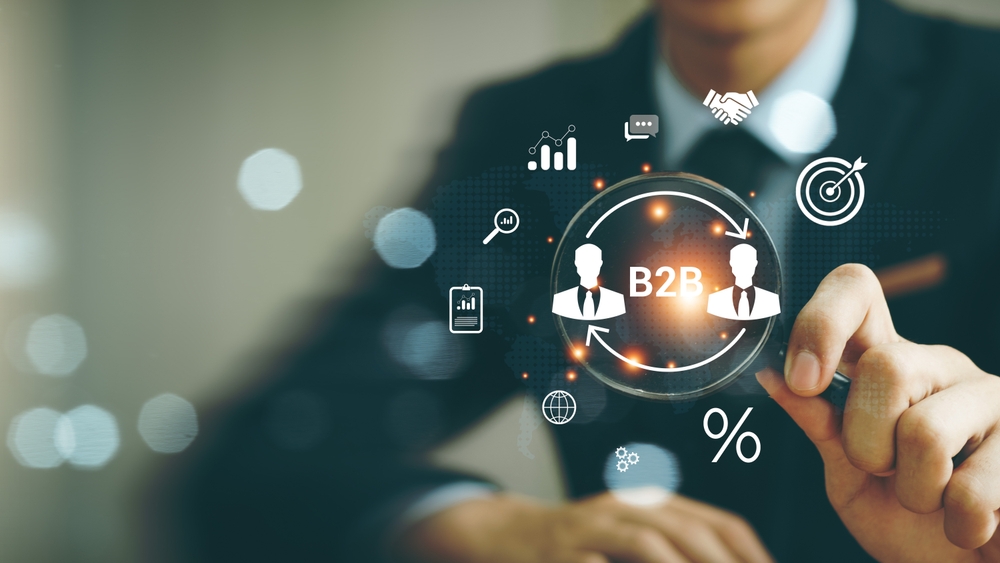
5. Optimizing User Experience (UX) for Better Conversion Rates
In the digital age, user experience (UX) plays a crucial role in lead generation. A well-designed website that is easy to navigate, fast, and mobile-friendly can significantly improve conversion rates. On the other hand, a poor UX can drive potential leads away, even if your product or service is superior.
SaaS companies must prioritize UX by conducting regular audits of their websites and digital touchpoints. Key areas to focus on include page load times, mobile optimization, and clear calls to action (CTAs). Additionally, incorporating elements such as testimonials, trust badges, and case studies can enhance credibility and encourage conversions.
As competition in the SaaS space intensifies, optimizing UX will be more important than ever in 2024. Companies that invest in creating seamless, user-friendly experiences will have a significant advantage in converting leads into customers.
6. The Power of Freemium Models and Tiered Pricing
Pricing strategies can be a game-changer in SaaS lead generation. Freemium models, where a basic version of the product is offered for free, can attract a large number of users, some of whom may eventually convert to paying customers. This model works particularly well for SaaS companies, as it allows potential customers to experience the product’s value before committing to a purchase.
In addition to freemium models, tiered pricing structures offer flexibility to cater to different customer segments. By offering different levels of service or features at varying price points, SaaS companies can appeal to a broader audience. This approach not only increases the potential customer base but also allows for upselling opportunities as customers grow and their needs evolve .
7. Deepening Customer Engagement through Multi-Touch Campaigns
In 2024, B2B buyers are expected to be more deliberate in their decision-making processes, often requiring multiple interactions with a brand before making a purchase. This trend underscores the importance of multi-touch campaigns that engage leads across various channels and touchpoints.
A multi-touch approach ensures that potential customers are exposed to consistent messaging and value propositions throughout their buyer’s journey. This can include a mix of content marketing, email campaigns, social media interactions, webinars, and direct sales outreach. The goal is to keep your brand top-of-mind and guide prospects through the funnel towards conversion.
By integrating various channels and creating cohesive campaigns, SaaS companies can build stronger relationships with their leads, increase trust, and ultimately drive more conversions.

8. The Role of Thought Leadership and Educational Content
In a crowded market, establishing your SaaS company as a thought leader can be a powerful way to attract and convert leads. Thought leadership involves sharing insights, knowledge, and expertise that help your audience solve their most pressing challenges. This can be achieved through various forms of content, including blogs, whitepapers, webinars, and speaking engagements.
Educational content not only positions your company as an authority in the industry but also provides value to your audience, which can help build trust and credibility. When potential customers view your brand as a trusted source of information, they are more likely to consider your solutions when they are ready to make a purchase.
In 2024, the demand for high-quality, educational content is expected to rise, as B2B buyers seek out resources that can help them navigate complex purchasing decisions. SaaS companies that invest in creating valuable thought leadership content will be well-positioned to capture and convert high-quality leads.
9. Integrating Generative AI for Content Creation and Lead Nurturing
As generative AI technologies like ChatGPT and DALL-E continue to evolve, their applications in B2B lead generation are expanding rapidly. SaaS companies are leveraging these tools to automate and enhance content creation, enabling the development of personalized marketing materials at scale. Generative AI can produce everything from blog posts and social media content to personalized emails and landing pages, all tailored to specific audience segments based on predictive analytics.
In 2024, the trend towards hyper-personalization through AI is expected to accelerate, with marketers using AI-generated content to create unique, individualized experiences for each lead. This approach not only improves engagement rates but also significantly reduces the time and resources required for manual content creation. Furthermore, AI can help in lead nurturing by generating personalized follow-up emails and messages that keep prospects engaged and moving through the sales funnel.
10. Embracing Sustainable and Ethical Marketing Practices
As consumers and businesses alike become more conscious of sustainability and ethical considerations, B2B SaaS companies are increasingly integrating these values into their marketing and lead generation strategies. This trend is not just about meeting regulatory requirements or avoiding negative publicity; it’s about aligning with the values of modern buyers, who are placing greater importance on environmental and social responsibility.
Incorporating sustainable practices into your lead generation strategy can take many forms, from using eco-friendly technologies to emphasizing your company’s commitment to ethical practices in your marketing materials. Highlighting sustainability can be particularly effective in attracting leads who prioritize corporate responsibility. Additionally, transparency in data usage and adherence to new privacy regulations, such as GDPR and upcoming U.S. laws, is becoming crucial as buyers become more concerned with how their data is handled.
11. Enhancing Data Privacy and Security Measures
With increasing regulations on data privacy and the phasing out of third-party cookies, data privacy has become a critical concern for B2B SaaS companies. In 2024, businesses will need to prioritize data security and transparency to build trust with their leads. This involves adopting new technologies and practices that ensure compliance with evolving privacy laws while also providing a secure experience for users.
For SaaS companies, this means not only complying with regulations like GDPR and the California Consumer Privacy Act (CCPA) but also being proactive in educating leads about how their data is being used. Transparency and control over personal data will become selling points, with companies that can demonstrate robust data protection measures likely to gain a competitive advantage in lead generation .
12. Utilizing Video Marketing for Higher Engagement
Video content continues to grow in importance for B2B marketing, offering a dynamic way to communicate complex information and engage with leads. In 2024, video marketing is expected to play an even more significant role in SaaS lead generation, with companies using video not just for product demos and testimonials but also for webinars, tutorials, and personalized video messages.
The interactive nature of video makes it an ideal medium for capturing attention and conveying value quickly. With the rise of platforms like YouTube, LinkedIn, and even TikTok in the B2B space, video content is becoming a crucial tool for building brand awareness and nurturing leads. Additionally, the integration of AI and analytics into video marketing allows for better targeting and personalization, further enhancing the effectiveness of this approach.
These additional sections delve into the latest trends and strategies that are shaping the future of B2B lead generation for SaaS companies. By adopting these practices, companies can better position themselves to capture and convert leads in an increasingly competitive market.

The Future of B2B SaaS Lead Generation
As the B2B SaaS landscape continues to evolve, lead generation strategies must adapt to meet the changing needs and expectations of buyers. By embracing innovative approaches such as hyper-personalization, ABM, social media engagement, and optimized UX, SaaS companies can effectively capture and convert leads in 2024 and beyond. The key to success lies in understanding your audience, delivering real value, and building strong, trust-based relationships that stand the test of time.
In this dynamic environment, staying ahead of the curve requires continuous learning and experimentation. SaaS companies that are willing to innovate and adapt will not only survive but thrive in the competitive world of B2B lead generation.
Frequently Asked B2B SaaS Questions
How can SaaS companies effectively measure the ROI of their lead generation strategies?
Measuring the ROI of lead generation strategies for SaaS companies involves tracking key performance indicators (KPIs) such as cost per lead (CPL), lead conversion rate, customer acquisition cost (CAC), and customer lifetime value (CLTV). Additionally, integrating analytics tools with CRM systems allows companies to monitor the entire sales funnel, from initial engagement to conversion, ensuring that each touchpoint contributes positively to the overall ROI. By comparing the cost of lead generation activities with the revenue generated from converted leads, companies can determine the effectiveness of their strategies.
What role does content marketing play in B2B SaaS lead generation?
Content marketing is crucial for B2B SaaS lead generation as it helps establish thought leadership, build trust, and nurture leads through the sales funnel. High-quality content such as blog posts, whitepapers, eBooks, and webinars provides valuable insights that attract potential customers and encourage them to engage with the brand. By addressing the specific pain points and needs of their target audience, SaaS companies can use content marketing to drive traffic, capture leads, and move them closer to conversion.
How can SaaS companies leverage automation in their lead generation efforts?
Automation can significantly enhance lead generation for SaaS companies by streamlining processes such as email marketing, lead scoring, and follow-up activities. Tools like marketing automation platforms and CRM systems can be used to automate routine tasks, ensuring timely and consistent communication with leads. Additionally, automation allows for more personalized interactions by using data to tailor messaging and offers based on the lead’s behavior and preferences, thereby improving the efficiency and effectiveness of lead generation efforts.
What is the significance of Account-Based Marketing (ABM) in B2B SaaS lead generation?
Account-Based Marketing (ABM) is highly significant in B2B SaaS lead generation because it allows companies to focus their marketing efforts on specific high-value accounts rather than a broader audience. By aligning sales and marketing teams to target these key accounts with personalized campaigns, ABM can lead to higher engagement rates and better conversion outcomes. The approach is especially effective in the SaaS industry, where long sales cycles and complex buying processes benefit from a focused, relationship-driven strategy.
How do data privacy regulations impact B2B lead generation strategies for SaaS companies?
Data privacy regulations, such as GDPR in Europe and CCPA in California, have a significant impact on B2B lead generation strategies by imposing strict rules on how companies can collect, store, and use personal data. SaaS companies must ensure compliance with these regulations to avoid legal penalties and maintain trust with their prospects. This often involves adopting transparent data practices, obtaining explicit consent for data collection, and implementing robust security measures to protect user information. As a result, companies are increasingly turning to first-party data and zero-party data strategies, where users voluntarily share their information in exchange for personalized experiences.
